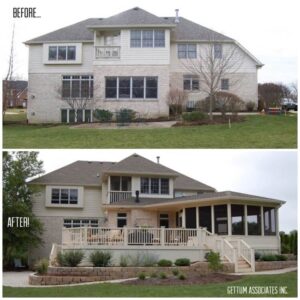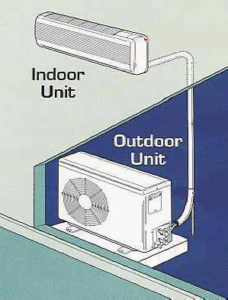If you have completed a DIY (do-it-yourself) window replacement (without the help of an experienced contractor) we hope you have not skipped an important step! One of the most important things you can do is insulate around the new window opening.
This would be the space between the window frame and the stud wall framing (see below image).
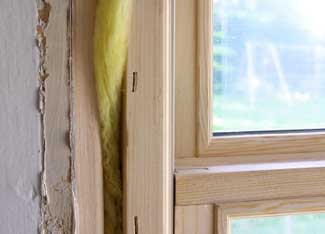
In the past, this area was somewhat to difficult to properly insulate. Most contractors would “stuff” fiberglass insulation in these spaces in hopes to keep out, or at least slow down, air movement from the outside in. This insulating practice still occurs, and in fact, if properly done, can be an effective means in insulating around your windows. But, for many, it is difficult to fill the cavity being insulated without leaving some voids. However, there is a better product and one that has gained widespread-use among contractors and DIY’ers alike.
What product is it? Your new best friend: spray foam insulation!
The Advantages of Spray Foam Insulation
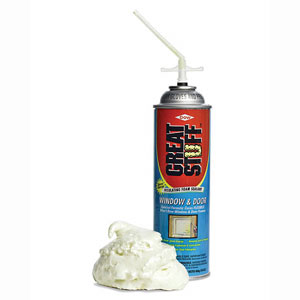 Spray foam insulation has become popular, not just for windows and doors, but as wall and ceiling insulation also. While there are many types on the market now, we will focus on the product that is available to everyone at almost every hardware and home improvement supply stores.
Spray foam insulation has become popular, not just for windows and doors, but as wall and ceiling insulation also. While there are many types on the market now, we will focus on the product that is available to everyone at almost every hardware and home improvement supply stores.
Marketed as “Great Stuff” by Dow Chemical Corp., this expandable foam sealant (see image on the right) is great in sealing cracks in a wide variety of materials, including windows and doors. Visit the Dow Website at the link above for a description of the full line of spray foam insulations available.
There are also similar products available from manufacturer’s such as 3M and DAP, however some of these may be latex-based sealants, while Dow’s great stuff is a closed-cell, polyurethane product. Closed-cell foam provides a much higher R-value per inch than open-cell foam. Because of its density and glue-like tenacity, it also adds structural strength to a wall, ceiling, or roof assembly.
Prior to the introduction of specific types of spray foam for different applications, there was only one type of foam insulation available in a can. I can remember using this product and you had to be careful to not over-fill the cavity. The insulation would expand, in some cases too much, and push window frames out of plumb and out of square.
With the introduction of spray foam, specific to window and door installations, the threat of this problem was eliminated. The window and door insulating foam has a special formula that does not expand as rapidly. It also cures “softer” and can be sanded and painted if desired.
More Advantages of Spray Foam
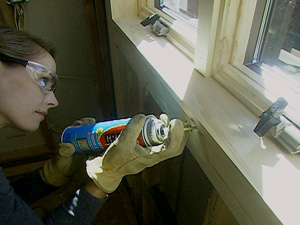 There are more several advantages of spray foam insulation when compared to chinked or stuffed insulation in relation to insulating window and door frames.
There are more several advantages of spray foam insulation when compared to chinked or stuffed insulation in relation to insulating window and door frames.
- The biggest advantage is that spray foam will expand to fill “nooks and crannies” in the opening. As mentioned above, it was always hard to tell whether or not you were reaching the back of the cavity with stuffed fiberglass. The opening needed to be firmly packed, which for fiberglass is not a good thing as fiberglass utilizes pockets of air between the fiberglass fibers to provide its insulating value.
- Another advantage is spray foam insulation is not affected by water. It can “seal” out water even, just like a caulk. Also, since it is closed-cell, it will not take-on or absorb water. However, it is recommended that the exterior perimeter of windows and doors are caulked as a first line of defense from water intrusion. Plus, the interior of your window or door perimeter should also be caulked. If not for aesthetics, it is again one more step you can take to stop air infiltration.
For those who have had old windows (especially those with old sash-weights) upgraded by replacement window sashes or pocket-type windows you want to verify that the old openings and weigh pockets have been insulated.
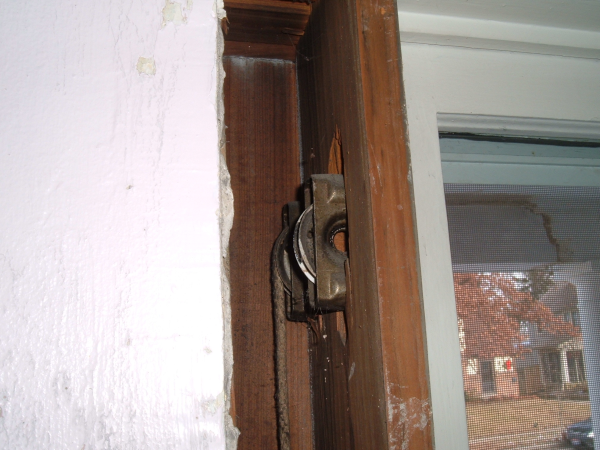 Typically, you can access this pocket by removing the trim around your windows. Carefully pry the casing away with a stiff putty knife, or a special trim removal tool and check to be sure these cavities were filled with insulation.
Typically, you can access this pocket by removing the trim around your windows. Carefully pry the casing away with a stiff putty knife, or a special trim removal tool and check to be sure these cavities were filled with insulation.
If they are missing insulation, or are insulated with fiberglass, you can insulate with polyurethan foam insulation. Then, you can replace the trim, knowing you have properly insulated between the windows and the rough-opening framing (see photo at right).
In summary, polyurethan spray foam insulation, typically purchased in cans from your local home improvement center, is a superior way to insulate openings around windows and doors. Although stuffed fiberglass insulation is acceptable, spray foam insulation has many advantages which will add to the comfort of your home.
Improve Your Home’s Exterior With Help From Gettum Associates
For questions, do not hesitate to consult a reputable Indianapolis area remodel contractor, such as Gettum Associates Inc.
If you’re an Indianapolis-area homeowner and want to plan your exterior home remodeling project, get in touch with Gettum Associates, Inc. for a Design Consultation by calling 1-317-888-5681, or sending an email to remodel@gettum.com.
You can also learn about hiring a trustworthy exterior remodeling contractor by downloading our Free Exterior Hiring Guide!


